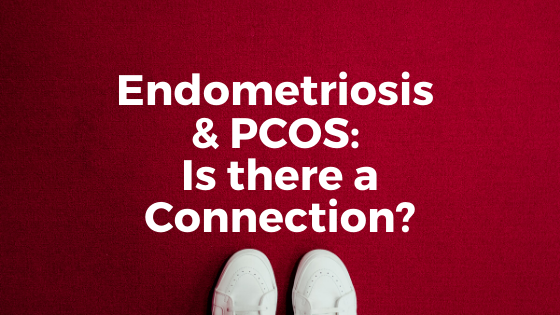Polycystic Ovarian Syndrome (P.C.O.S) and endometriosis are similar in the fact that they both affect women in child bearing age but also very different conditions altogether the reason I call them cousins and not sisters. I am fortunate enough to have experienced one of these, a story that has been painted on these streets for a while now and I have gone ahead to elaborate at length what P.C.O.S is so today I want to focus my energy on endometriosis.
Endometriosis is an often painful disorder in which tissue similar to the tissue that normally lines the inside of your uterus (the endometrium) grows outside the uterus. The endometrial tissue that grows outside the uterus often gets trapped and cannot leave the body by way of a period. Endometriosis often goes undetected, even when trying to conceive which can make it difficult to get and sometimes stay pregnant if left untreated.
One of the major points of difference for the two conditions is with their symptoms, causes and effects and we will briefly look at these;
Symptoms
Unlike P.C.O.S where the major symptom is irregular periods or them missing altogether, endometriosis often presents itself with very painful periods accompanied by severe menstrual cramps, pain in the lower back and abdomen, pain during sex, pain with urination or bowel movements during periods, and other gastrointestinal issues.
Possible causes of endometriosis
I wish I had a different story about the causes from what you already know but unfortunately I do not. To this day all that science has been able to find are the possible causes for the conditions and not even a cure. If you have read my article about my P.C.O.S journey you know its causes. Let us now focus on endometriosis;
- Induction theory – some experts believe that peritoneal cells (cells inside the lining of your abdomen) are transformed due to your hormones or any immune system issues and turn into endometrial cells.
- Retrograde menstruation – during a normal menstrual cycle, built up endometrial tissue flows out of the body with periods. Retrograde menstruation means that some of that tissue ends up flowing back into the fallopian tube or other areas in the abdominal cavity, builds up, but cannot leave the body.
- Transformation of embryonic cells – embryonic cells are the cells that develop in the earliest stages of your life and may transform into endometrial cells during puberty due to an excess of estrogen in the body.
- A disorder with the immune system – if one has issues with their immune system, it may make it difficult for the body to identify and destroy endometrial tissue outside of the uterus.
- Endometrial cell transport – endometrial cells that can transport outside the uterus through blood vessels or lymphatic system.
Solutions
Just like I mentioned before, to this day there is no available cure for the two conditions therefore we manage symptoms and the rest is left to miracles and chance.
I would love to share the story of Tia Mowry who suffered from endometriosis and gives a detailed account of her journey. She talks about an extreme pelvic pain she had had for years and the trips she had made to the doctors who often brushed it off and called them really bad cramps that some women often experience. This reminded me of our own culture here in Africa where women have been conditioned to endure pain and labelled ‘strong woman’ yet there could be something terribly wrong.
Experts indicate that P.C.O.S is easier to diagnose since it involves less invasive physical exams including a sonogram to look at physical cysts on the ovaries and blood tests to determine if hormone levels. Endometriosis on the other hand is harder to diagnose due to needing a laparoscopy for a true diagnosis. Although laparoscopy is a minimally-invasive surgery, it is still a surgery so it deters some people from looking into it leaving them wanting to just cover up the symptoms with medication for pain management.
If you have a laparoscopy and are diagnosed with endometriosis, the most common goal is to clear out the endometrial tissue depending on where it is located and how severe it is. If you are not trying to conceive, a laparoscopic removal of endometriosis may ease your painful symptoms and lead to overall better health of your reproductive system. If your plan includes conceiving, you may be able to get pregnant on your own after your endometriosis is cleared out.
Endometriosis can be a challenging condition to manage. An early diagnosis, a multidisciplinary medical team and an understanding of your diagnosis may result in better management of your symptoms therefore if you feel something that is not resonating well with your body, please reach out to a physician and get it checked out. No one deserves to live in pain.

Next Wednesday I will speak about some of the nutrition management options available. Be sure to come again.
See you then

Very insightful!
Well done.
Thank you Tory, Always
sometimes people dont know that they are suffering from these things you have shade light on.. thanks for bringing these to our attention
That is so true. Information is power and liberating. Thank you for reading
Thanks for the info.ihave been diagnosed with p.c.o.s.and it’s a walk in the park.
Is it? I would love to hear your experience so far if you do not mind sharing
Great know
Thanks for shedding light on these topics
Thank you